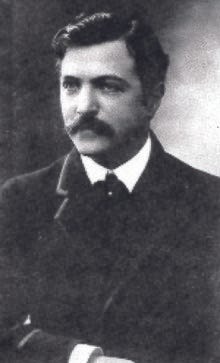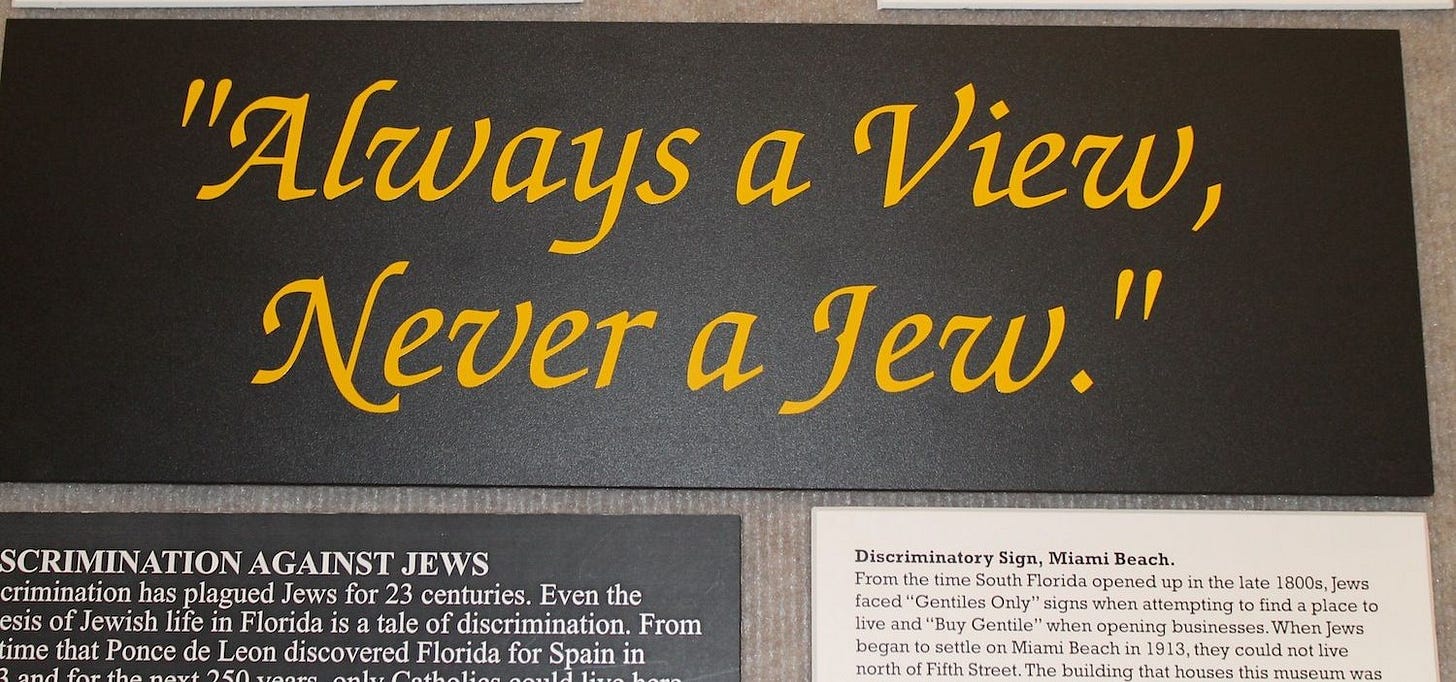Last week in a Fort Lauderdale bookstore, I found a small book published in 1929 by a French writer named Edmond Fleg. The book is titled “Why I Am A Jew,” and I immediately put down the $20USD to buy it (I assume that’s like $67CAD these days). I love old books, I love first editions, I love a bargain, and I loved the title.
When I opened it up to read on my flight home, I was immediately struck by the first page. This is what Fleg wrote:
I am asked why I am a Jew. It is to you, my grandson, who are not yet born, that I would make my reply.
When will you be old enough to understand me? My eldest son is nineteen years old. My younger son is fourteen years old. When will you be born? In ten years, perhaps fifteen…When will you read what I here set down? About 1950, 1960? Will people still read in 1960? What form will the world then take? Will the mechanical have suppressed the spiritual? Will the mind have created a new universe for itself? Will the problems that trouble me to-day exist for you? Will there be any Jews left?
I believe there will. They have survived the Pharaohs, Nebuchadnezzar, Constantine, Mohammed; they have survived the inquisition and assimilation; they will survive the automobile. (emphasis added)
What a thought in 1929. They will survive the automobile, of all things. Clearly, he lacked the imagination to foresee the Cybertruck. But I digress…
Edmond Fleg
I had never heard of Fleg before. But I read the book, and learned that he was a French intellectual, born in 1874, and who had a crisis of faith following his bar mitzvah, in which he just felt like Judaism didn’t adequately speak to him. He played footsie with Christianity for some time, but was deeply moved by the events of the Dreyfus Affair in his early 20s. This seems to have spoken to his Judaism more than anything else in his life to that point and he “came home.” In 1899 he attended the Third Zionist Congress in Basel and heard Herzl speak, becoming deeply moved by Zionism and the eternal longing for a Jewish state. During the First World War, he joined the French Foreign Legion and fought valiantly, being awarded the Croix de Guerre.
In later life he became a playwright and writer, and developed the foundation of a modern French-Jewish spirituality, which allowed secular French Jews to preserve their Jewish identity.
Tragically, both of his sons died fighting in World War Two. He never got the grandson to whom he wrote and dedicated his book. He died in Paris in October 1963, aged 88.
Fleg saw the Jews survive far more than the automobile. From when he wrote this book in 1929, he saw Jews survive the rise of Hitler, Kristallnacht, the Farhud, the Holocaust, the Kielce Pogrom, the War of Independence, the Suez Crisis, and years of post-war antisemitism. When he died in 1963, he would have certainly been marveling at all that had taken place to the Jewish world during his 88 years. So much more has happened in the 62 years since.
South Florida
I don’t spend much time in Florida, but always find it interesting when I do. Granted, the parts I spend time in are largely Jewish bubbles (this trip was Miami Beach, Fort Lauderdale, and Boca Raton), but I always marvel at Jewish life there. The kosher restaurants, the Israeli flags, and this year the signs and memorials for the hostages plastered on the sides of buildings, inside businesses, around everyone’s necks (hard to wear a pin with no shirt on), and even on the sidewalk. It seems like there’s something different to being Jewish in Florida.
As an aside, I recall in 2017, Conan O’Brien did a week of shows in Israel. On one of his first episodes, he visited the Tel Aviv beach and quipped, “Here I am on the Tel Aviv beach! It looks just like Miami Beach, but with far fewer Jews!”
But South Florida wasn’t always like this. In fact, in the early 20th century, there was extensive and systemic antisemitism in South Florida. The first Jew to arrive in Miami was Samuel Singer, who migrated from Palm Beach in 1895. Though things built up - by 1896 Jews already hilariously owned 12 of the 16 businesses in Miami - a few years later there was a massive fire and yellow fever epidemic, which led to the Jewish community of Miami falling apart. One Jew remained: Isidor Cohen.
It was common after WW1 to see signs that said “Gentiles Only” or “No Jews or Dogs,” whereas many businesses refused to sell land or give hotel lodgings to Jews passing through. By the 1930s, some advertisements for Miami Beach oceanfront hotels actually said, “Always a view, never a Jew.” (far catchier than “From the River to the Sea” IMO)
Things began to significantly change after WW2. Restrictive barriers to Jewish land ownership were removed, and antisemitism declined sharply in Florida after the Holocaust. As such, large numbers of Jews began moving to South Florida, so much so that by the 1970s, almost 80% of the population of Miami Beach was Jewish. The Jewish influence was tremendous, as can still be seen today. There have been at least 16 Jewish mayors of Miami Beach, and there’s a reason it has been called the “Shtetl by the Sea.” Walking around today, though Yiddish you won’t hear, there is plenty of Hebrew to be heard spoken by both locals and tourists. The kosher restaurants are also, seemingly, endless.
Today, approximately 650,000 Jews live in South Florida (750,000 in all of Florida, or about 3% of Florida’s population). For comparison, there are about 335,000 Jews who live in all of Canada (less than 1% of Canada’s population).
Nu? Fleg and Florida?
So aside from the first two letters, what do Edmond Fleg and the Jewish population in Southern Florida have to do with each other? Well, for starters, they’re both fascinating stories, but its a bit more than that.
Fleg questioned what sort of a future he would live to see, and wondered not if the Jewish people would survive, but rather what the Jews would survive. He wrote in 1929, but saw Jews survive far more than the automobile in the remaining 34 years of his life. The Jewish history of Southern Florida shows how the Jewish community can come together after surviving, after overcoming antisemitism - which has always ebbed and flowed, and which of course still exists in some parts of Florida as it does everywhere - and create an environment where Jews walk around, proudly, boldly, and fiercely living Jewish lives. It was beautiful to see and feel that in Florida, as it sort of felt like a needed injection of Jewish pride to bring back home here to Canada.
At the end of Fleg’s book, he wrote this:
I am a Jew because the faith of Israel asks every possible sacrifice of my soul.
I am a Jew because in all places where there are tears and suffering the Jew weeps.
I am a Jew because in every age when the cry of despair is heard the Jew hopes.
I am a Jew because the message of Israel is the most ancient and the most modern.
I am a Jew because Israel’s promise is a universal promise.
I am a Jew because for Israel the world is not finished; men will complete it.
I am a Jew because for Israel man is not yet created; men are creating him.
I am a Jew because Israel places Man and his Unity above nations and above Israel itself.
I am a Jew because above Man, image of the Divine Unity, Israel places the unity which is divine.
And tell me if in this unique history you do not feel the eternal presence of a mind and a will that have ordained its mission to this people and have made its fulfillment possible, in trying it thru suffering, in saving it thru trials, in guiding it step by step from its unhappy past to its triumphant future. As for me, my child, who have so long sought for the evidence of the existence of God, I have found it in the existence of Israel.
Fleg wrote these words 96 years ago, and they ring as true today as they did then. He is also not referring to Israel the state, as this was written 19 years before Israel’s establishment, but rather to Israel the nation, Israel the people, and Israel the idea. It gave him solace, as it has to so many Jews throughout history, and so many Jews since 1929, especially since 1948. And yes, as he wrote at the start of his book, the problems that troubled him then do still exist for us today.
But I read these words after leaving Florida, returning to my home in Canada, and thought that they easily could have been written today. That in 2025, our mission as Jews - aside from returning home our hostages - must be to continue to be the Jews who weep when we see suffering, who hope when we hear despair, to be a light unto other nations despite the darkness they seek to project on us, and to never veer from the course of bettering ourselves, of being our best and boldest selves.
Whether in Canada with our challenges, or Florida with our conveniences, we must never forget that we have gotten to where we are and reached our heights not just because of what we can do, but because of who we are. That we are Jews, that we must never stop proclaiming the same no matter the year, no matter the country, no matter the climate, and no matter what people say about us. As Fleg wrote, “Jews are Jews. They wish to remain Jews. Always, in all places, even despite themselves, they remain Jews.”
This is our role, and our goal, for 2025. To be Jews, to be Israel, and to be our best selves. It is all we have ever done, and it is what we will always do.
Much of the information above about the Jewish history of South Florida came from this article from Aish.com.








your article grabbed my attention well written and salient-Thanks
How fortuitous to find such a book!
The challenges for us Jews will continue forever, but we will always overcome and be a light to the world. Good article Ad! Well written!